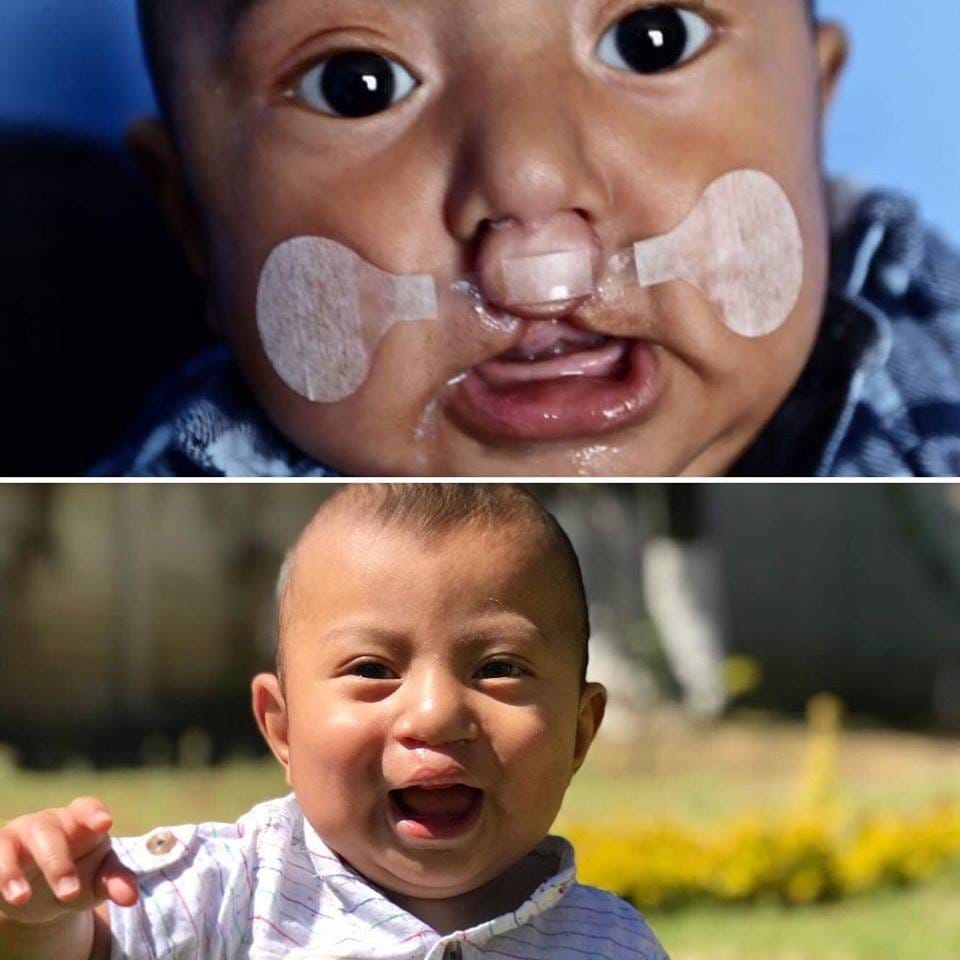Cleft lip and palate affects one in every 700 UK babies.[i] A cleft is defined as a gap or split in the upper lip and/or roof of the mouth. This is present from birth.
For cleft lip and palate patients, a greater awareness of its impact on oral health leads to better dental care and a higher quality of life.

A cleft lip and palate develops when the baby is in the womb. Here, the facial tissues fail to properly fuse.[i] Who this affects is mostly random, but there are several risk factors that may increase the chance of a cleft lip and palate. They are:
Feeding is difficult for babies with cleft lip or palate. As there is a gap in the lip and/or palate, the mouth cannot make a tight seal to feed through. To amend this, surgery closes the gap. For cleft lip patients, this is performed at 3-6 months. For cleft palate patients, an age of 6-12 months is the standard. But whilst treatment helps, there are still problems that remain as the child grows up.
Children with a cleft are at a higher risk of tooth decay and gum disease. Studies show that 71.9% of cleft lip and palate children reported tooth decay.[ii] There are many reasons for this, starting with the different shape of the mouth caused by a cleft. Changes in the upper jaw impacts the position of the teeth, their shape, number and rate of growth. This makes it harder to brush the teeth, leading to plaque build-up.
Another major area for concern is dry mouth. A survey on people born with a cleft reported that 54% were regular snorers.[iv] A further 61% of the participants stated that they regularly wake up with a dry mouth. Mouth breathing, especially for long periods at night, dries out the mouth. As saliva helps protect the teeth from decay, a lack of it increases the risk of oral disease.
Impacted diet is also a cause for concern. 27% of patients born with a cleft avoid certain foods.[iv] This is often hard, small or spicy options. Limited food choice can lead to an unhealthy diet, increasing the risk of health complications and oral disease.[i] To prevent this, a consistent oral hygiene routine must be encouraged in cleft lip and palate patients from a young age.

Treatment of the cleft lip and palate can improve the oral and overall health of a child. The DynaCleft system from Total TMJ guides facial tissues to enhance nasal symmetry, supporting and better positioning a cleft. Easy to use at home, it maximises comfort and doesn’t interfere with feeding, ensuring a smooth experience ahead of surgery.
Cleft lip and palate remains an ongoing challenge for oral health. Armed with the knowledge on how the condition affects oral health, we can better support affected patients before surgery and in the many years after.
For more details about Total TMJ and the products available, please email info@totaltmj.co.uk
[i] Cleft. (n.d.). Cleft lip and palate. [online] Available at: https://www.cleft.org.uk/pages/faqs/category/faqs.
[ii] Wu, Q., Li, Z., Zhang, Y., Peng, X. and Zhou, X. (2022). Dental caries and periodontitis risk factors in cleft lip and palate patients. Frontiers in Pediatrics, [online] 10, p.1092809. doi:https://doi.org/10.3389/fped.2022.1092809.
[iii] NHS (2019). Overview – Cleft lip and palate. [online] NHS. Available at: https://www.nhs.uk/conditions/cleft-lip-and-palate/.
[iv] World Health Organization (2023). Unhealthy diet. [online] World Health Organization – Regional Office for the Eastern Mediterranean. Available at: https://www.emro.who.int/noncommunicable-diseases/causes/unhealthy-diets.html.